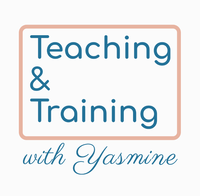- Home
- Teaching Specific
-
Training Specific
- Almost Everything You Need to Know About Being an Effective Trainer
- 9 Essential Skills & Training Tools for Trainers
- Training Needs Analysis
- The 9 Elements that Make Top Employee Training Programs So Successful
- How to Write a Lesson Plan for Corporate Training
- Training Checklists
- Books for Trainers
- Trainer, Facilitator, Presenter: What is the difference?
-
Where the Twain Shall Meet
- Ergonomics
- ESL Volunteer Tutor Guidelines and Expectations
- About Yasmine
- https://americanenglish.state.gov/
Sources of Conflict
1) Conflict of values
• Tradition vs. Originality
• Loyalty vs. Honesty
• Planning vs. Improvising
• Stability vs. Risk-taking
• Individual Focus vs. Group Focus
• Competition vs. Collaboration
2) Interpersonal conflict
· Amount of communication
· Organization of communication
· Detail in communication
· Approach to deadlines
· Work style
• Tradition vs. Originality
• Loyalty vs. Honesty
• Planning vs. Improvising
• Stability vs. Risk-taking
• Individual Focus vs. Group Focus
• Competition vs. Collaboration
2) Interpersonal conflict
· Amount of communication
· Organization of communication
· Detail in communication
· Approach to deadlines
· Work style
Conflict Resolution Strategies1) Address the issue quickly
2) Use neutral words 3) Describe the positive outcome you want 4) Embrace differences of opinion 5) Focus on actionable solutions If feelings escalate:
|
Model for Resolving Conflict
1. Move to a nondefensive attitude
a. Make a conscious choice to be open minded and acknowledge there are different perspectives
b. Think about how your style responds to conflict
c. Remember your perception of the situation is probably different than how the other person is perceiving the problem
d. Think about how your body is responding to conflict
e. You can choose how you respond to conflict
2. Listen to each other’s current positions
a. You are just identifying current positions, not discussing or evaluating
b. Don’t start to judge yet!
c. Get to know each other and understand each other’s values and motives
d. One person shares and then the other person restates what they heard
3. Temporarily suspend each position and state the problem in terms of interests and needs underlying these positions
4. Identify areas of commonality
5. Identify areas of difference
6. Generate as many solutions as possible
7. Devise a plan for implementation and evaluation
a. Create plan together
b. Write it down
c. Have each party sign it or in some way officially agree to the situation
d. Assign follow-ups
e. Agree how you will track progress
a. Make a conscious choice to be open minded and acknowledge there are different perspectives
b. Think about how your style responds to conflict
c. Remember your perception of the situation is probably different than how the other person is perceiving the problem
d. Think about how your body is responding to conflict
e. You can choose how you respond to conflict
2. Listen to each other’s current positions
a. You are just identifying current positions, not discussing or evaluating
b. Don’t start to judge yet!
c. Get to know each other and understand each other’s values and motives
d. One person shares and then the other person restates what they heard
3. Temporarily suspend each position and state the problem in terms of interests and needs underlying these positions
4. Identify areas of commonality
5. Identify areas of difference
6. Generate as many solutions as possible
- Brainstorming Techniques: http://www.brainstorming.co.uk/tutorials/tutorialcontents.html
- You should all follow the standard brainstorming rules:
- Postpone and withhold your judgment of ideas
- Encourage wild and exaggerated ideas
- Quantity counts at this stage, not quality
- Build on the ideas put forward by others
- Every person and every idea has equal worth
- Ideally you will have a brief warm-up on a totally unrelated and fun topic. This will get your creative juices going and help establish a less restrictive mood. You should start the main topic when the right mood is established.
7. Devise a plan for implementation and evaluation
a. Create plan together
b. Write it down
c. Have each party sign it or in some way officially agree to the situation
d. Assign follow-ups
e. Agree how you will track progress
Cite
Notes from a taken Emcor online course. “Resolving Conflict” Attended 15 Apr 2020.
Notes from a taken Emcor online course. “Resolving Conflict” Attended 15 Apr 2020.


